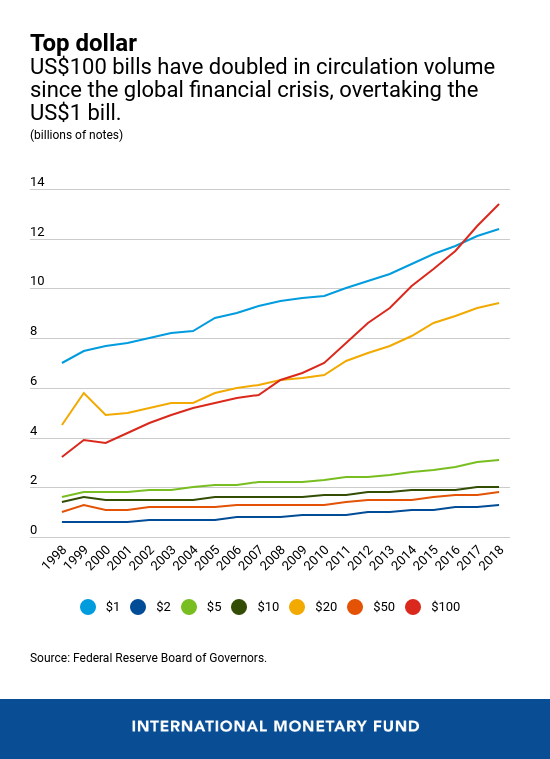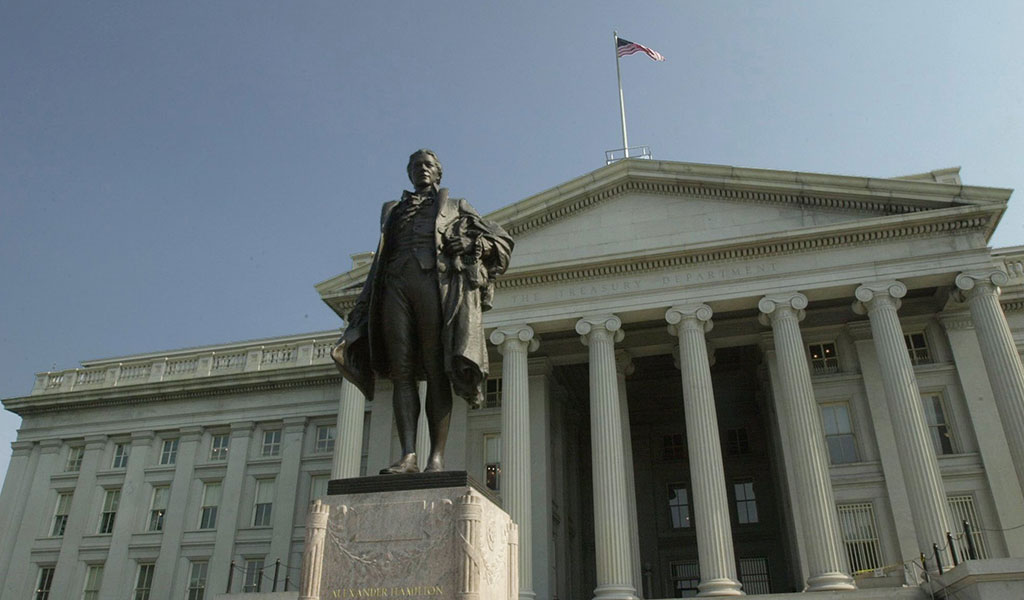A curious thing has happened in US currency: the $100 bill recently overtook the ubiquitous $1 bill in circulation volume, for the first time in history. In other words, the most valuable banknote in the United States became the most widely circulated.
As we show in our chart of the week, based on an article in the IMF’s Finance & Development magazine, there are more $100 bills circulating now than ever before, roughly doubling in volume since the global financial crisis.
So what explains this boom in Benjamins, as the bills are known, especially when cashless options are increasing by the day? In this age of digital everything, are Americans suddenly growing nostalgic for greenbacks in high denominations?
Not exactly. While overall demand for US currency is indeed on the rise, most $100 bills are held abroad. According to the Federal Reserve Bank of Chicago, nearly 80 percent of $100 bills—and more than 60 percent of all US bills—are overseas, up from roughly 30 percent in 1980.
The most valuable banknote in the United States became the most widely circulated.
Geopolitical instability could be one reason behind the surge in $100 bills, according to Fed economist Ruth Judson. “Overseas demand for US dollars is likely driven by its status as a safe asset,” Judson told the Richmond Fed’s Econ Focus in 2018.
According to a 2017 paper by Judson, international demand for US dollars increased over the 1990s and into the early 2000s, and then stabilized or declined after the 2002 debut of the cash euro. This decline in demand continued until late 2008, when the global financial crisis triggered renewed demand for US banknotes.
Harvard University’s Kenneth Rogoff says big banknotes and illicit activity are closely linked. “Worldwide, high-value currency notes are mainly used to avoid taxes and regulation, and for illegal activity,” he observes. “Apartments and houses in major cities all over the world are paid for with suitcases of cash every day, and it is not because the buyers are afraid of bank failures.”
Another factor may be at play, Rogoff says. “Underground demand for paper currency has been surely rising in part because interest rates and inflation are exceptionally low.”
But why the dollar? Its role as the dominant international reserve currency may be the key, according to Rogoff.



